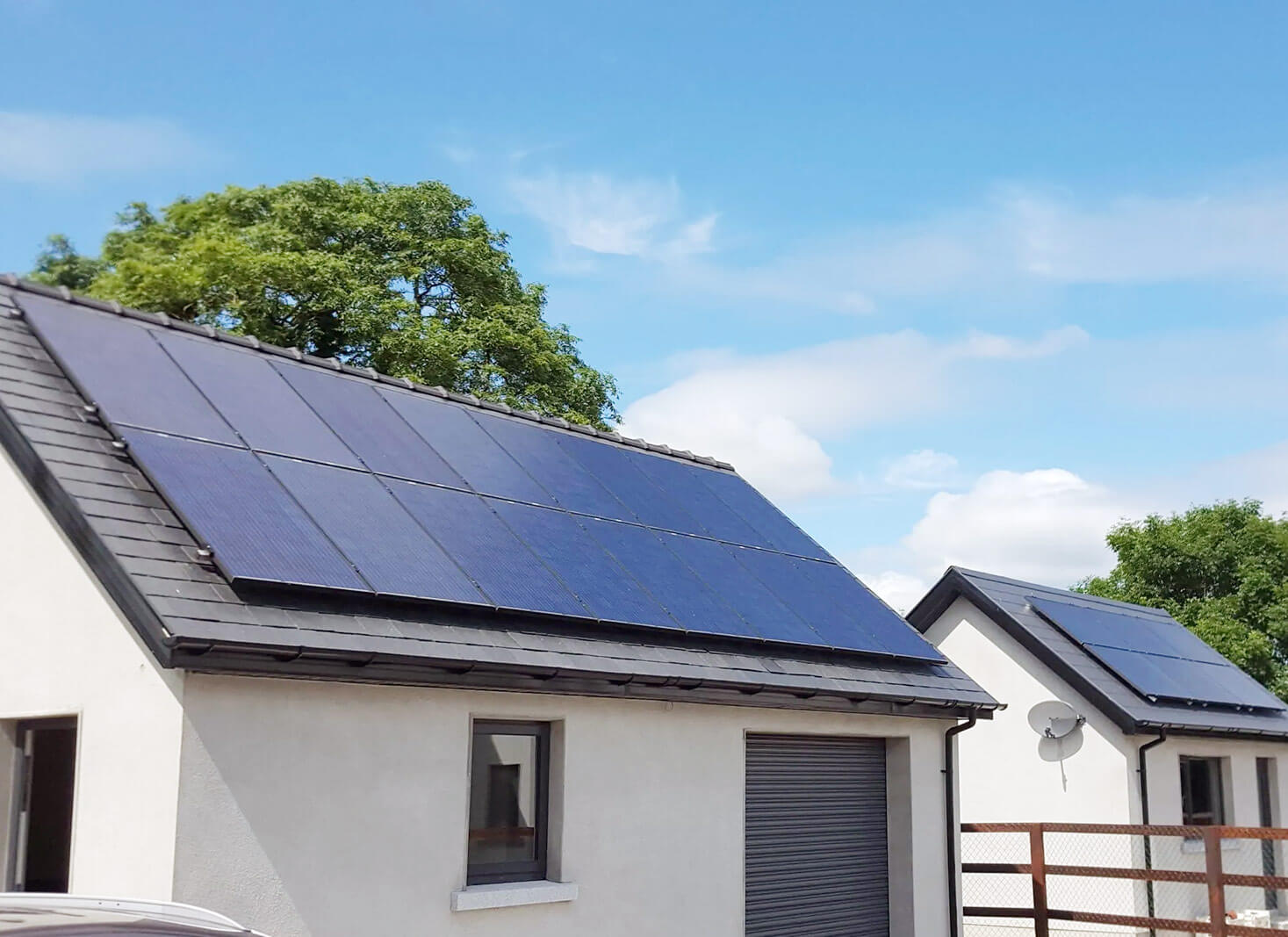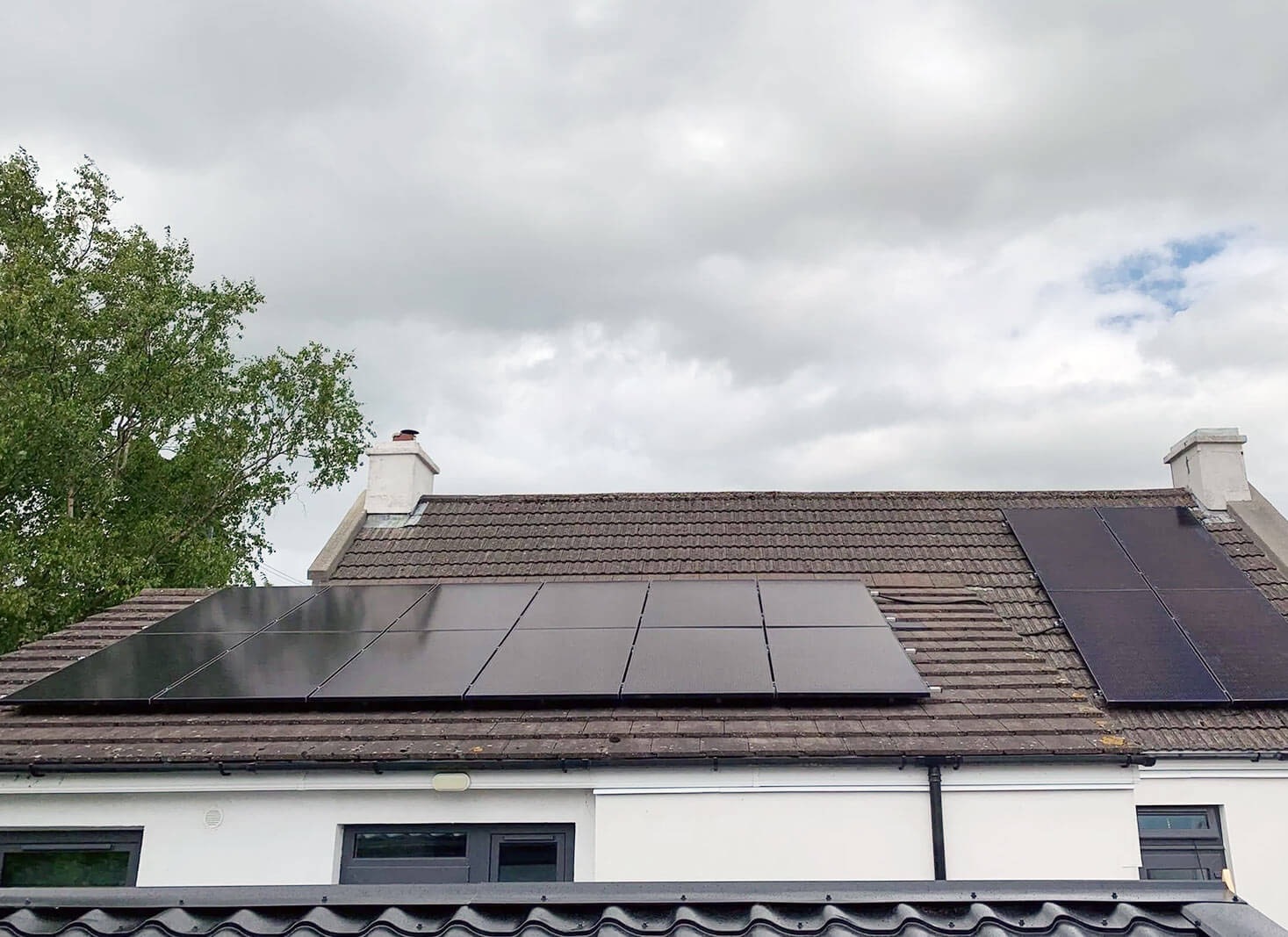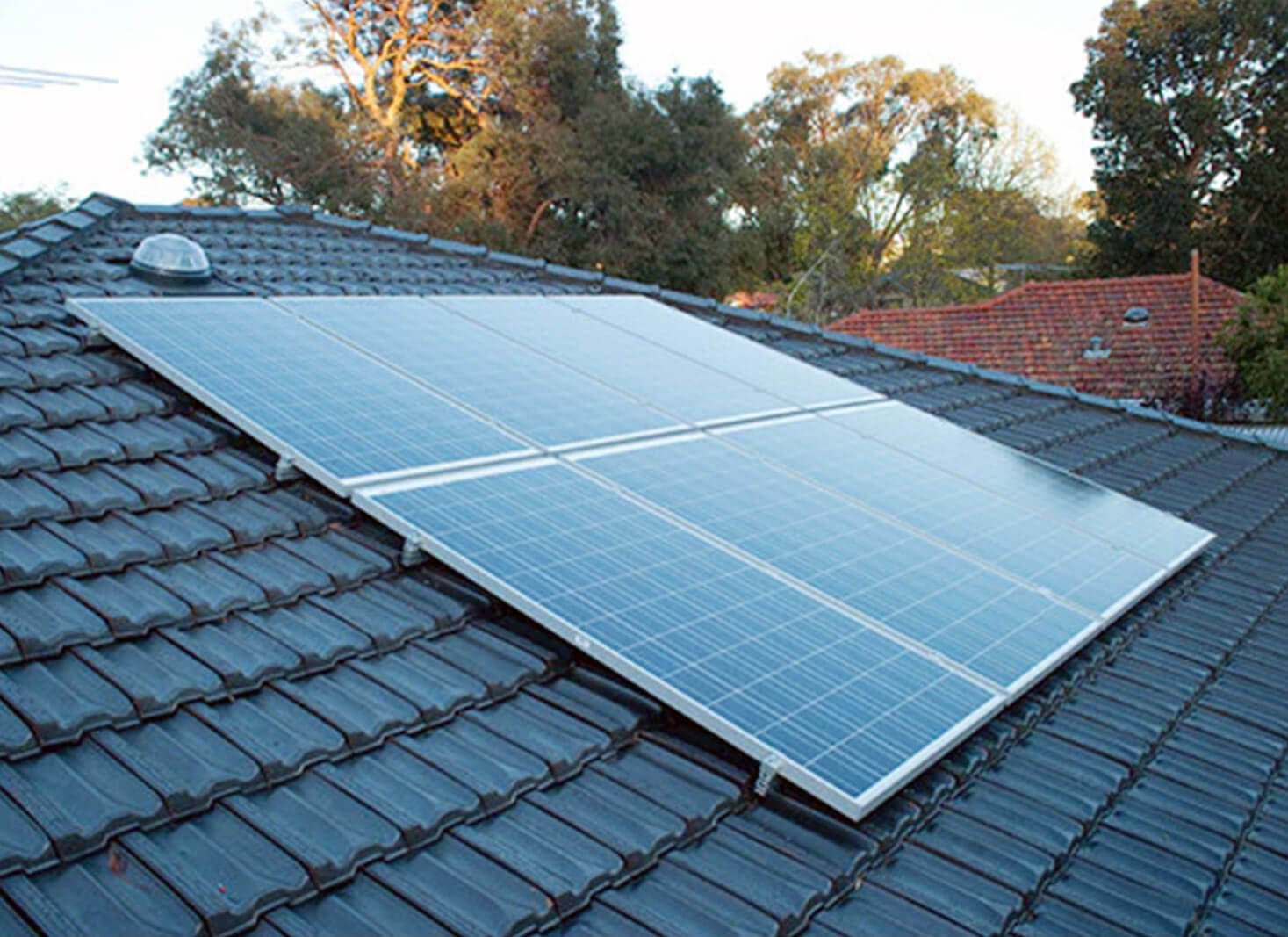2kW Solar System: Cost, Rebates & Output Stats in 2024
A 2 kW solar system offers an affordable and effective way for households looking to embrace sustainable energy and reduce their power bills.
The 2 kW solar system can power a small home of about 1–3 people and generate enough power to run a few lights, fans, a refrigerator, a television, and other small appliances. Let’s dive into the costs and benefits of a 2 kW solar system and learn how to unlock its potential for your home.
Table of Contents
ToggleShort Summary
- A 2 kW solar system in Australia costs $3,800 with the STC rebate and GST.
- Government rebates of between $629 to $865 may be available depending on where you live in Australia.
- Maximise efficiency and cost savings by assessing energy needs, comparing providers, and considering warranty coverage & after-sales support.
- Enjoy potential financial benefits such as cost savings on electricity bills, earnings from exported energy & strong return on investment.
How much does a 2 kW solar PV system cost?

The average cost of installing a 2 kW solar system is $3,700, ranging from $2,500 to $4,500. The cost can go up to $5,700 for the latest high-efficiency solar panels. This price is inclusive of the government rebate and GST.
Factors such as location, type and brand of solar panels, panel quality, and type of inverter can affect the cost of installing a 2 kW solar system.
It’s essential to evaluate your budget and energy needs when considering the installation cost of a 2 kW solar system. While the initial investment may seem substantial, the long-term financial benefits, such as reduced electricity bills and potential earnings from exporting surplus energy, can outweigh the initial costs.
Cost of a 2 kW solar system in different states in Australia
The cost of a 2 kW solar system varies widely depending on your location. Find out how much a 2 kW system costs in your state in the table below.
| State | Gross Cost | Net Cost (rebate included) |
|---|---|---|
| New South Wales | $4,423 | $3,676 |
| Tasmania | $4,423 | $3,794 |
| Victoria | $4,423 | $3,794 |
| Australian Capital Territory | $4,423 | $3,676 |
| Western Australia | $4,423 | $3,676 |
| Northern Territory | $4,423 | $3,598 |
| Queensland | $4,423 | $3,676 |
| South Australia | $4,423 | $3,676 |
Government rebates and incentives for a 2 kW solar system
The Australian government offers solar rebates to encourage the adoption of solar energy. The solar rebate is a government initiative called the Small-scale Renewable Energy Scheme (SRES). Homeowners and small businesses can now get a rebate of approximately $865 for a 2 kW solar system.
These rebates and incentives can significantly reduce the initial cost of installing a 2 kW solar system, making it a more affordable and attractive option for homeowners looking to switch to renewable energy sources.
Once you install an eligible 2 kW solar system, you can get a rebate by claiming your STCs (Small-scale Technology Certificates). The STCs you can get for your 2 kW solar system will depend on your STC zone and rating.
The following table shows the rebate amount for a 2 kW solar system in each STC zone.
| STC zone | STC rating | Rebate Amount |
|---|---|---|
| 1 | 1.622 | $865 |
| 2 | 1.536 | $825 |
| 3 | 1.382 | $747 |
| 4 | 1.185 | $629 |
Learn more about solar STCs here.
2 kW solar rebate per state in Australia
Let’s find out how much rebate you can get for a 2 kW solar system in your state.
| State | Rebate Amount |
|---|---|
| New South Wales | $747 |
| Tasmania | $629 |
| Victoria | $629 |
| Australian Capital Territory | $747 |
| Western Australia | $747 |
| Northern Territory | $825 |
| Queensland | $747 |
| South Australia | $747 |
How much power does a 2 kW solar system generate per day?

A 2 kW solar system can generate a daily energy output of approximately 7.5 kWh to 8.5 kWh. This is enough to power a typical household for a day, depending on the size of the home and the amount of energy used. A retired couple with an average daily electricity usage between 6.1 kWh and 12.1 kWh would be an ideal candidate for a 2 kW solar system.
The following table shows how much electricity a 2 kW solar system generates in major regions of Australia.
| City/State | Daily Power Production (kWh) | Annual Power Production (kWh) |
|---|---|---|
| Brisbane, QLD | 8.40 | 3,066 |
| Sydney, NSW | 7.80 | 2,847 |
| Perth, WA | 8.80 | 3,212 |
| Melbourne, VIC | 7.20 | 2,628 |
| Adelaide, SA | 8.40 | 3,066 |
| Hobart, TAS | 7.00 | 2,555 |
| Canberra, ACT | 8.60 | 3,139 |
| Darwin, NT | 8.80 | 3,212 |
The optimal performance of your solar system depends on factors such as the direction in which it is installed, location, weather, temperature, and solar radiation. By understanding these factors and their impact on your solar system’s performance, you can optimise its energy output and maximise your savings.
Keep in mind that while a 2 kW solar system can meet the daily energy needs of a small household, it is essential to consider your individual energy consumption habits and requirements when selecting the best solar system for your home.
Factors affecting the efficiency and output of a 2 kW solar power system
The efficiency of a 2kW solar system may be influenced by factors such as:
- Shading
- Roof orientation
- Roof pitch
- Climate
- Solar panel efficiency, size and capacity
- Location
- Weather conditions
- Environmental factors
To maximise the performance of a 2 kW solar system, it’s essential to ensure that your solar panels are installed in an optimal direction, which can vary depending on your location and the amount of sunlight received throughout the day.
Moreover, it’s vital to regularly maintain your solar system by cleaning the panels and monitoring their performance. This will help to ensure that your solar system is operating at peak efficiency and providing the maximum amount of clean, renewable energy to power your home.
How many solar panels does it take to make a 2 kW solar system?
It takes 8 solar panels to make 2 kW, depending on the panel size. The most common advice is to use 250-watt panels, meaning that 8 panels would make up a 2 kW solar system. If you use higher-efficiency panels, like 400 W panels, you will need only 5 panels to make up to 2,000 W (2 kW).
Here are common solar panel sizes that can make up a 2 kW solar energy system:
- 250 W x 8 solar panels to make 2.00 kW
- 280 W x 7 solar panels to make 1.96 kW
- 300 W x 7 solar panels to make 2.1 kW
- 330 W x 6 solar panels to make 1.98 kW
- 350 W x 6 solar panels to make 2.10 kW
- 370 W x 5 solar panels to make 1.85 kW
- 390 W x 5 solar panels to make 1.95 kW
- 400 W x 5 solar panels to make 2.00 kW
- 420 W x 5 solar panels to make 2.10 kW
- 450 W x 4 solar panels to make 1.80 kW
- 480 W x 4 solar panels to make 1.92 kW
- 500 W x 4 solar panels to make 2.00 kW
Roof space requirements for a 2 kW solar system
The size of residential solar panels can range from 1.6m x 1.0 m (1.6 m2) to 1.7m x 1.0m (1.7 m2).
A 2 kW solar system with 8 panels will therefore require 12.8 to 13.6 square metres of roof space.
Calculations:
1.6 x 8 (panels) = 12.8m2 of roof space
1.7 x 8 (panels) = 13.6m2 of roof space
Higher-efficiency panels like the 400 W and 500 W will require about 8 and 6.4 square metres of roof space, respectively.
Financial benefits of a 2kW solar system

Investing in a 2 kW solar system can provide significant financial advantages, including cost savings on electricity bills, earnings from exporting surplus energy, and a strong return on investment. With feed-in tariff rates of approximately 8 cents per kWh, homeowners can potentially save hundreds of dollars on their quarterly power bills.
In this section, we’ll delve deeper into the financial benefits of a 2 kW solar system, examining potential cost savings, earnings, and return on investment.
Cost savings on electricity bills
It is estimated that a 2 kW solar system can save up to approximately $200 per quarterly power bill, or $800 to $1,000 annually if all of the solar power is used in the home. However, actual savings depend on the location and average electricity rates in that area.
By utilising most of the solar power generated during the day, homeowners can save even more money, as the price of power from the grid is higher than the export price paid back to solar power system owners.
Earnings from exporting excess energy
Exporting surplus solar energy back to the grid can generate additional income for homeowners, with rates of approximately 8c per kWh in most Australian states. However, the greater the rate of solar energy exports, the lower the rate of remuneration.
It’s worth noting that the potential earnings from exporting excess energy with a 2 kW solar system depend on various factors such as location, energy prices, and feed-in tariffs.
If you use 50% of the energy and export 50% to the grid (which is the most probable scenario), you would save about $650 annually.
If you export 100% of your power to the grid, you will save about $250 annually.
Return on investment/payback period
Research indicates that a 2 kW solar system has a return on investment of approximately 7.5 years. However, the return on investment may vary based on the location and cost of electricity in the respective area. The estimated payback period for a 2 kW solar power system is between 4 and 5 years.
To accelerate your return on investment, it’s crucial to ensure that your solar system is installed and maintained correctly, maximising its efficiency and performance. This, in turn, will lead to higher cost savings and a potentially faster recoupment of your initial investment.
Choosing the right 2kW solar system for your home

Selecting the right 2 kW solar system for your home is a crucial decision that depends on factors such as your energy needs, budget, and available roof space. It’s essential to evaluate your power bill or smart metre data to determine your daily energy consumption and select a solar system that can adequately meet your requirements.
In this section, we’ll provide guidance on choosing the best 2 kW solar system for your home by assessing your energy needs, comparing solar providers, and considering warranty coverage and after-sales support.
Assessing your energy needs
To determine if a 2 kW solar system is suitable for your household, it’s essential to calculate your average daily energy consumption. This can be done by analysing your power bill or smart metre data and converting the information to watts. A 2 kW solar system can generate approximately 8 kWh of energy per day.
By understanding your individual energy consumption habits and requirements, you can select a solar system that is tailored to your needs, ensuring maximum efficiency and cost savings.
Comparing solar providers
It’s important to research and compare solar providers to find the best fit for your home. When evaluating solar providers, consider factors such as pricing, technical specifications, the quality of equipment, warranties, and customer service.
By thoroughly comparing solar providers and their offerings, you can make an informed decision and choose a provider that will deliver a high-quality solar system that is aligned with your energy needs and budget.
Warranty and after-sales support
When choosing a solar system, it’s crucial to consider warranty coverage and after-sales support. A comprehensive warranty should cover both the panels and the inverter for a minimum of 10 years, while after-sales support should include technical assistance and maintenance services.
By carefully considering warranty terms and after-sales support, you can ensure that your 2 kW solar system remains efficient and well-maintained, providing you with clean, renewable energy for many years to come.
2 kW solar system with battery price
A 2 kW solar system would require a battery system with a capacity of 5.6 kWh.
Such a battery would cost between $4,480 and $11,200, or between $800 and $2,000 per kWh. The exact cost will depend on the type and quality of the battery system.
So, the overall cost for a 2 kW solar system with a battery system would range from $7,980 to $14,700.
A battery system helps you store excess energy to use later at night when the panels are not working or during overcast days.
What can a 2 kW solar system run?
A 2 kW solar system is an excellent option for small homes with 1–3 people or small businesses. The system can run a few lights, a television, a refrigerator, and other small electrical appliances. However, this will depend on how much solar radiation your location gets.
If you want to run larger appliances such as the air conditioner, dishwasher, washer, and dryer, you should consider a bigger system, like a 6.6 kW solar system.
Is a 2 kW solar system enough to run a house?
An average household in Australia uses between 16 kWh and 18 kWh of energy per day. Therefore, a 2 kW solar system would cover at least half of the electricity needed to cover the energy needs of an average home.
Although this is not enough to run the entire house, as you will still need to draw electricity from the grid, it will help reduce your power bills.
Is a 2 kW solar system worth it?
Yes, a 2 kW solar system is a worthy investment. Besides generating energy to reduce your energy bills, you will also contribute positively to the environment by lowering CO2 emissions. Therefore, your home will be more energy-efficient and environmentally friendly.
More so, 2 kW solar systems are affordable, and if you include the rebate you get from the federal and state governments, the upfront installation costs will be significantly low. And if you use more than 60% of the power your system generates, you can save up to $800 per year.
Compare Solar Panel Quotes
Table of Contents
Toggle









